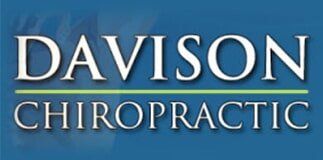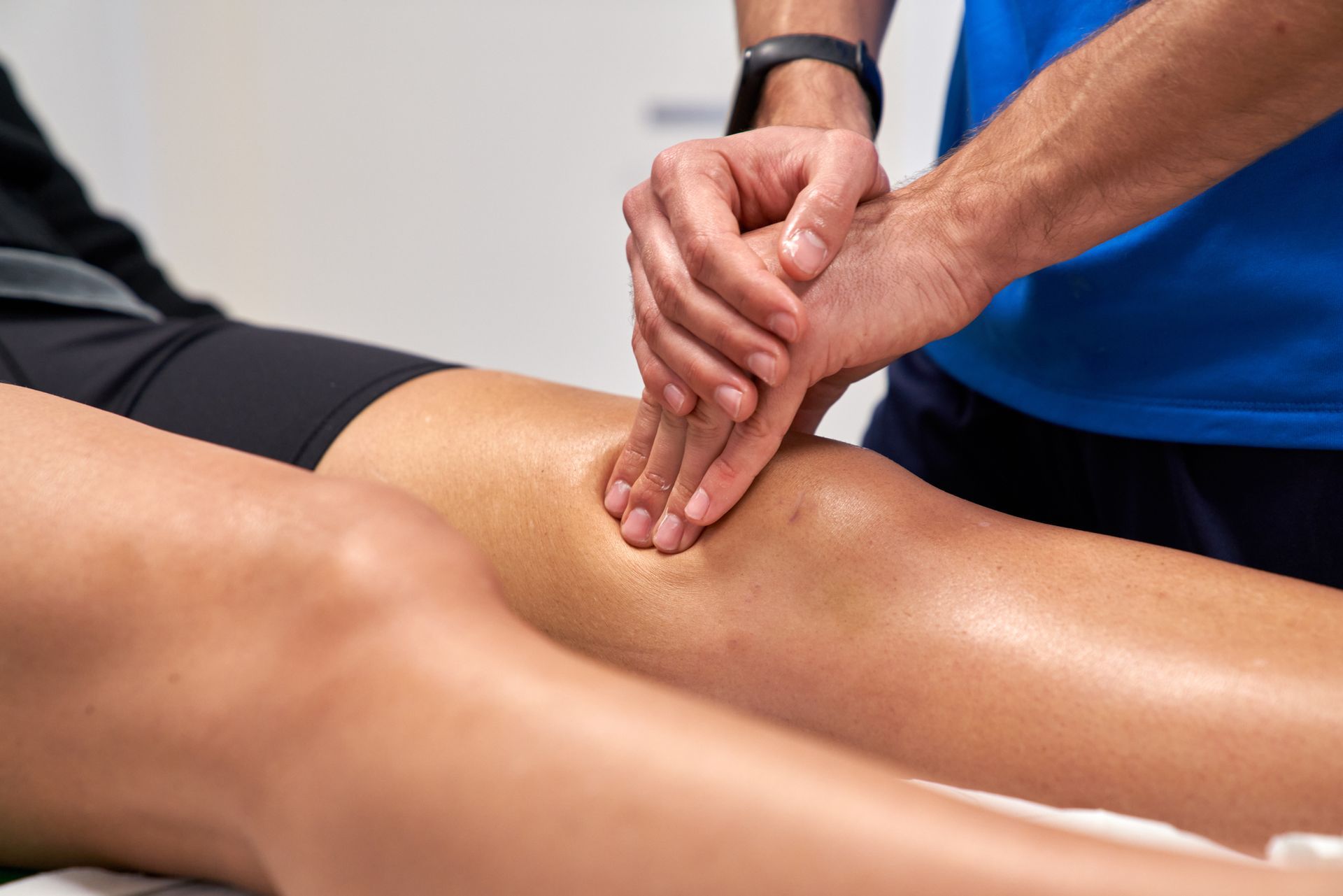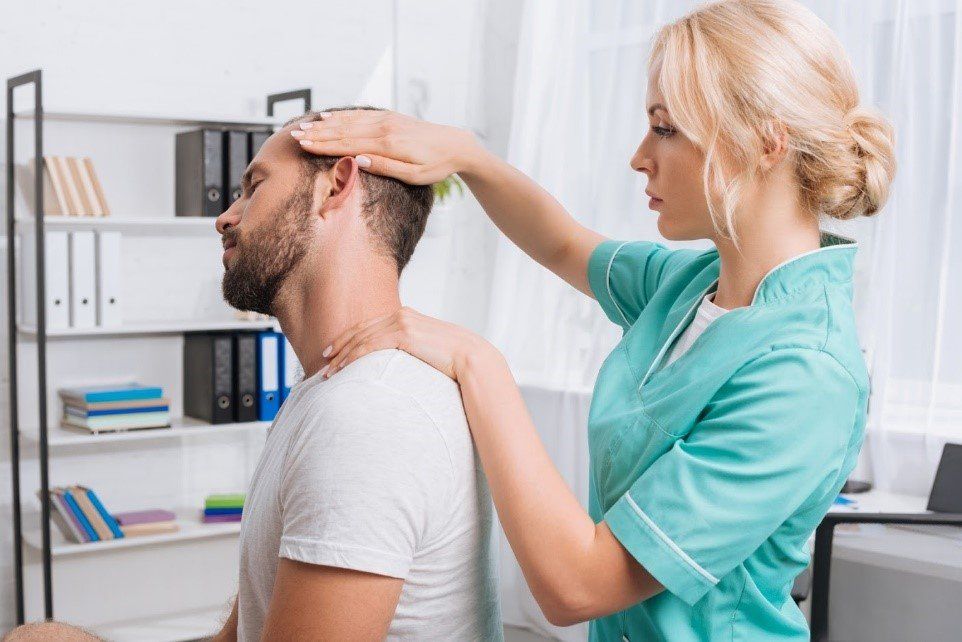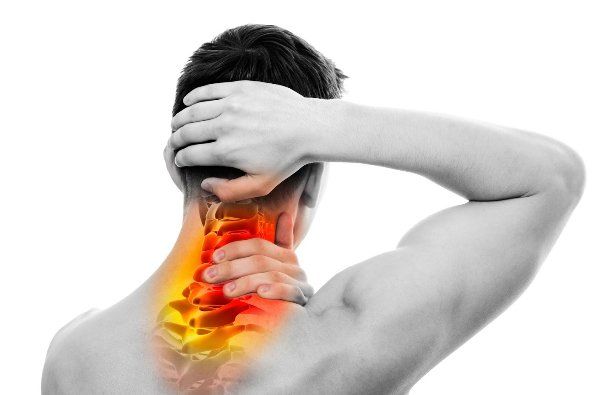Signs and Symptoms of Forward Head Posture
Admin • July 20, 2019

A lot of people have poor posture, but if your upper back rounds forward, and your chin pokes out too much, you may have forward head posture. This can lead to long-term pain and discomfort. If you've experienced pain in your neck or upper back, keep reading to learn more about the signs and symptoms of forward head posture.
Rounded Upper Back and Flattened Lower Back
You can spot if someone has forward head posture by looking at their normal standing position. With a healthy neck and back, your upper back, neck, and head should almost form a straight line (some inward curvature of the cervical spine should exist) with your head balanced evenly on your neck.
However, if you have forward neck posture, your head sits forward, pulling your neck and upper back and causing them to become rounded with your chin poking forward. At the same time, your lower back, which should also have a slight natural inward curve, starts to flatten.
Your head, which can weigh eight to 12 pounds, becomes heavier the more forward it leans. On average, holding your neck just one inch forward can add 10 pounds to what the neck has to support.
Muscle and Spine Strain and Stress
Your head leaning forward puts a lot of strain on your neck and upper back muscles because of the weight of your head. This causes some muscles to shrink and others to elongate. These shortened muscles affect your mobility, making it hard to turn your neck, especially to look behind you. Elongated muscles become weak, making your upper back and shoulders weak.
The most commonly elongated muscles include the deep cervical flexors, erector spinae, and the shoulder blade retractors. The deep cervical flexors and erector spinae are largely responsible for supporting the neck and helping with rotation. The shoulder blade retractors allow you to pull your shoulder blades back, opening the chest. If the retractors are weak, your shoulders rotate forward.
Muscles that become short include suboccipital muscles, chest muscles, and the levator scapulae muscles. The suboccipital muscles help keep the head up and straight. The chest muscles get tight because of the rounded shoulders. Levator scapular muscles lift the scapular and help move the neck. When these muscles become too tight, standing up straight and opening your chest becomes increasingly difficult and painful.
Tight neck muscles don't just affect your mobility and strength; they can lead to headaches. Some patients with severe forward head posture may even have craniofacial pain from the muscles being pulled too tightly.
Hyperflexion and Hyperextension of the Spine
Hyperflexion and hyperextension simply mean your spine bends and stretches too much. Neck hyperflexion and hyperextension is actually closely associated with whiplash injuries, which often happen after car accidents when your head bends forward and then backward quickly and forcefully.
When you have forward head posture, however, the hyperflexion and hyperextension develop slowly from the long-term stretching of the muscles and spine and the weight of the head. The upper part of your cervical spine, right under the skull, hyperextends to keep your eyes looking straight ahead. Your lower cervical spine experiences hyperflexion, which with causes forward bending.
Forward head posture don't just make you look like you have a hunched back — it also causes long-term pain and weak muscles.
If you have any of the symptoms of forward head posture, you may want to schedule a chiropractic visit. A good chiropractic adjustment can eliminate some pain immediately. Plus, your provider can teach you helpful stretches and suggest other treatments that may help. For more information, contact us today at Davison Chiropractic.
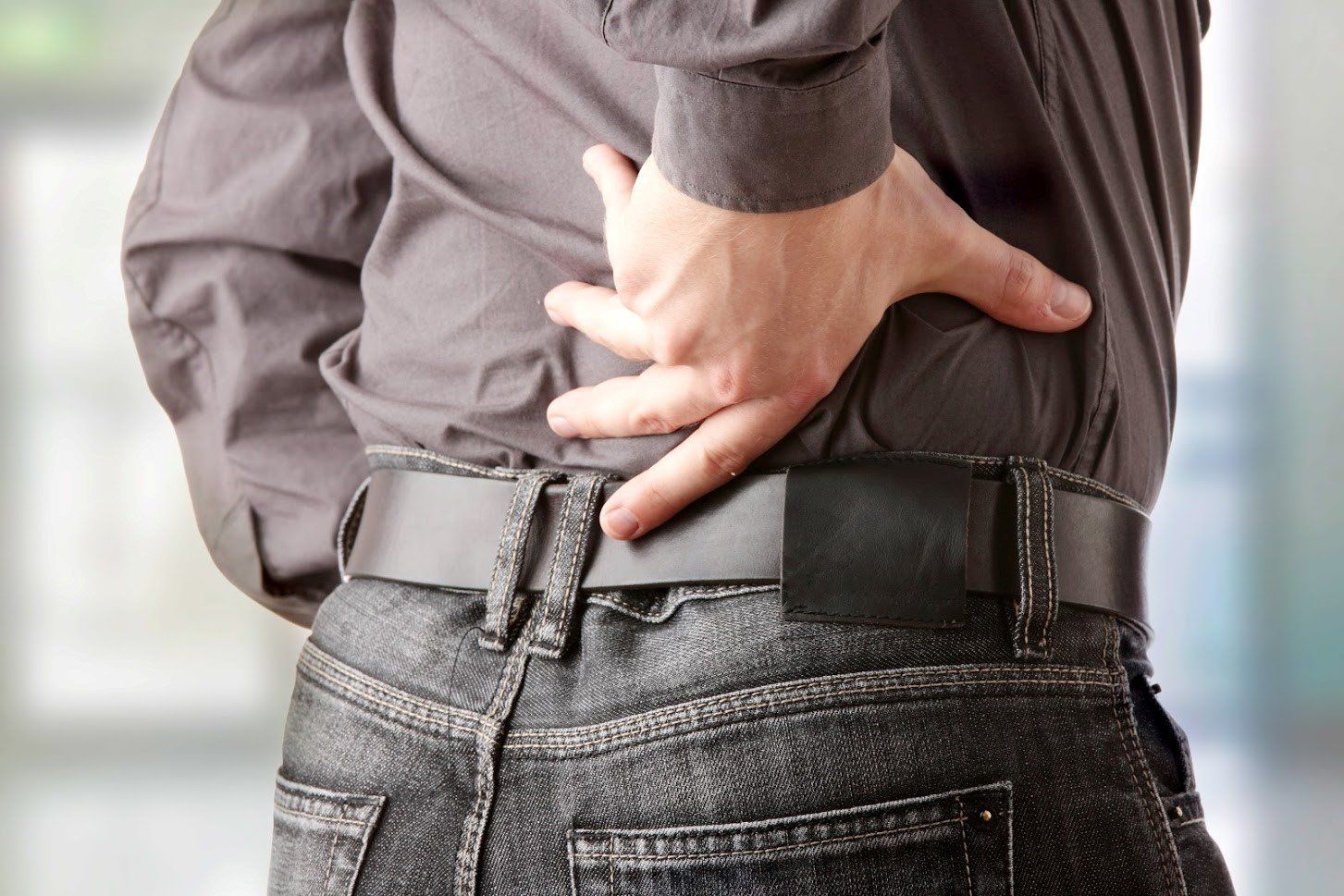
Cold laser therapy, also called low-level laser therapy (LLLT) or low-power laser therapy (LPLT), is a non-surgical pain management treatment suitable for some patients who experience back and neck pain or certain injuries. Chiropractors and other health care professionals apply cold laser therapy to the pained or inflamed areas. The procedure uses a low-level laser that emits near-infrared light. The light from the laser is able to penetrate the skin and reach the body's deeper tissues. Once the tissues absorb the light, it interacts with the body's cells and speeds up the healing process. The laser light also helps reduce pain and swelling in damaged tissues. Uses Cold laser therapy is used primarily on patients who have chronic musculoskeletal pain. While the treatment works on different parts of the body for different injuries, like ligament and muscle strains, patients who have lasting lower back or neck pain often find relief from laser therapy. Cold laser therapy also helps patients who have arthritis, fibromyalgia, carpal tunnel syndrome, hip bursitis, and temporomandibular joint dysfunction (TMJ). Procedure and Results A single treatment session of cold laser therapy is typically short. Most health care professionals who administer the treatment spend 30 seconds to several minutes holding the handheld laser over the affected areas. Treatment sessions that cover a large area, such as the entire lower back, take longer since the laser device will need to be moved around to target one smaller area at a time. The procedure isn't painful, and you won't feel any vibration or hear any noise. Some patients can feel the laser, but most do not report it as uncomfortable. There is no standard for the number and frequency of cold laser therapy treatments. How many sessions you'll need depends on the severity and type of your condition and how well previous treatment sessions work. You may have to wait several weeks to a month to see the full benefit of cold laser therapy, and some patients need to have several short sessions a week to get maximum relief. Cold laser therapy has been the subject of multiple studies that have shown generally favorable results, though many of the studies have small participant groups. This treatment is FDA-approved, so you know it’s safe and effective. Advantages and Disadvantages One of the biggest advantages of cold laser therapy is that it is a non-invasive treatment method. Since cold laser therapy doesn't lead to any downtime for healing, it can be a good treatment choice for patients who experience pain but have busy lifestyles. The therapy also doesn't involve the use of any medications, which makes it appealing to patients seeking drug-free ways to manage their pain. However, you can combine it with medications and other treatment methods to provide additional relief. The main disadvantage many patients report is that cold laser therapy doesn't work immediately. Most patients need multiple treatment sessions — as many as 30 — to see a significant reduction in inflammation and pain. Another downside to cold laser therapy is that some health insurance providers won't cover the cost of the treatment. But some health care practitioners offer billing or payment plans to help patients afford the cost of the treatment. Risks Cold laser therapy is approved for use by the FDA, and it is considered safe for most patients. The treatment has very few side effects and is tolerated very well by most people. Testing on pregnant women is lacking, so pregnant women shouldn't have cold laser therapy. People who have open sores, suspicious moles, or cancerous lesions shouldn't expose their skin to lasers. Davison Chiropractic offers chiropractic adjustments, massage therapy, and pain management treatments to patients in Davison and Lapeer, Michigan and the surrounding areas. Contact us today to schedule an appointment.
